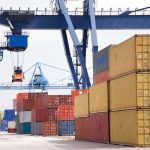
When a company looks for custom container solutions, Roll-On Roll-Off (RoRo), shipping usually comes to mind because it is similar to how a car ferry operates. Shippers want their shipment to reach its destination in the shortest time possible while keeping the costs to a minimum, which makes RoRo a popular solution for transporting wheeled cargo. Although RoRo has a reputation for cost-effectiveness, there are also some drawbacks.
Lift-On Lift-Off (LoLo) on the other hand, is a more ecological but expensive vehicle shipping solution that adheres to the “Green” import standards established by many countries.
What Is a RoRo versus a LoLo Shipment?
RoRo means that shipping employees can physically drive the vehicles on and off the ship, whereas LoLo shipments require a crane to load the vehicle cargo (which is housed in either a 20 ft or 40 ft container) onto the ship.
Different Types of Ships
- RoRo
The SOLAS, the international convention for the Safety of Life at Sea, defines a RoRo ship as “…a passenger ship with RoRo cargo spaces or special category spaces.”
The ships are specially designed to transport wheeled cargo, like cars, trucks, trailers, and semi-trailer trucks.
RoRo vessels have built-in ramps that allow the loader to drive the car or truck on and off the boat. Some ships are equipped with more than one ramp so they can load and unload vehicles simultaneously. The vehicles are then secured to the decks.
RoRo cargo is measured in in lanes in meters (LIMs) by simply multiplying the length and breadth of the load paths.
- Lolo
A LoLo ship must have a crane to load the cargo or containers. These ships are sometimes called self-geared vessels because they have cranes on top. The flexibility of the space enables the carrier to fit the needs of the freight being transported and can be stacked multiple containers high.
- CONRO, PCC, PCTC, ROLO, and ROPAX
Shipbuilders manufacture these variations of vehicle cargo ships to suit today’s need for tailored cargo solutions.
CONRO refers to a type of hybrid ship that carries containers and can load roll-on cargo.
Pure Car Carriers (PCC), and Pure Car Truck Carriers (PCTC) are explicitly made to carry only vehicles. PCCs only take cars, while PCTCs can accommodate any four-wheeled vehicle.
ROPAX ships accommodate passengers as well as containers.
RoRo Pros
- Cost
Shipping your vehicles using RoRo is cost effective and faster compared to other methods.
- No Special Preparation
There is little to no preparation if the vehicles are in operable condition. The battery must work, and there should be a small amount of gasoline in the tank.
- Convenient
The simplicity of loading and unloading a RoRo ship makes it one of the most convenient methods of transporting vehicles across the ocean. The shipper can avoid the more costly and relatively slow method of using a crane to load and offload.
- Cheaper Destination Fees
RoRo unloading fees are typically cheaper than other LoLo because you do not need container handling fees.
Cons
- Safety
Your vehicle cargo does not have as much protection using a RoRo service. You must leave the car unlocked, and a shipyard worker must drive the vehicle on and off the boat.
The risk of accidents is higher using RoRo. Vehicles are secured to the deck of a ship rather than in a container which exposes the cars or trucks to extreme temperatures, water, and rough seas.
The presence of gasoline or battery acid increases the risk of fires or damage.
- Port Constraints
Many smaller ports and some countries do not permit RoRo shipments due to port size and customs regulations and procedures.
- Insurance
Depending on the shipper or conditions, the cost advantage may be diminished if the shipper opts for more cargo insurance to ameliorate the safety risks.
LoLo Pros

- Port and Destination Availability
Virtually all ports and countries can accommodate LoLo shipments. The exporter can ship his products to the closest port to the destination warehouse or delivery site.
- Protection
High-value vehicles have greater protection from the elements when shipped in containers by using LoLo service.
- Space Advantages
By using a container, a shipper can also transport other materials by placing the items inside the vehicles or in the space surrounding them.
LoLo ships have lots of space on the ship’s deck and the top of the vessel. This allows for more flexibility in altering the areas to fit whatever cargo the cranes lift onto the boat.
If the exporter ships large cars or trucks, a LoLo vessel has the room to accommodate the vehicles.
- Eco-friendly
Due to limited CO2 omissions, this method of shipping vehicle freight is a greener alternative.
Cons
- Expense
Shipping using LoLo services costs more than shipping RORO.
Convenience and Speed
LoLo service can take much longer to complete loading and offloading, especially if you are sharing a 40 ft container.
Final Thoughts
For advice and guidance on which shipping method is the best option for your company, do your research and look for a company with a good track record of providing quality customer service.







